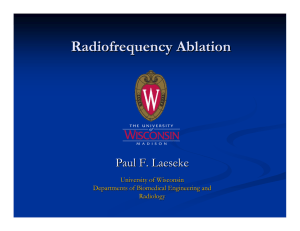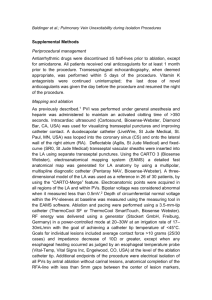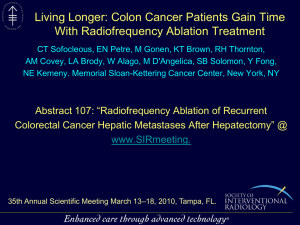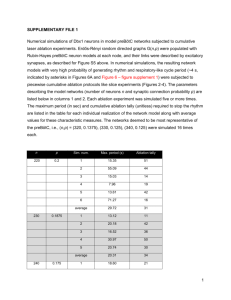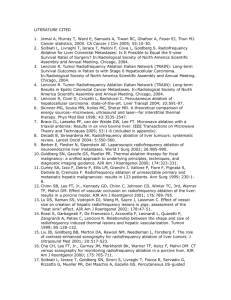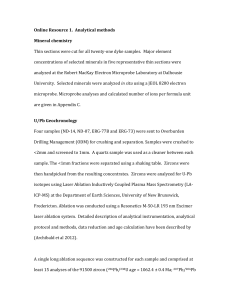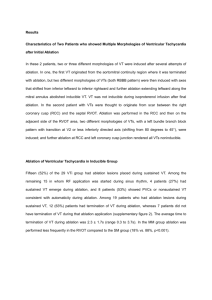RFA Printer Friendly Format
advertisement
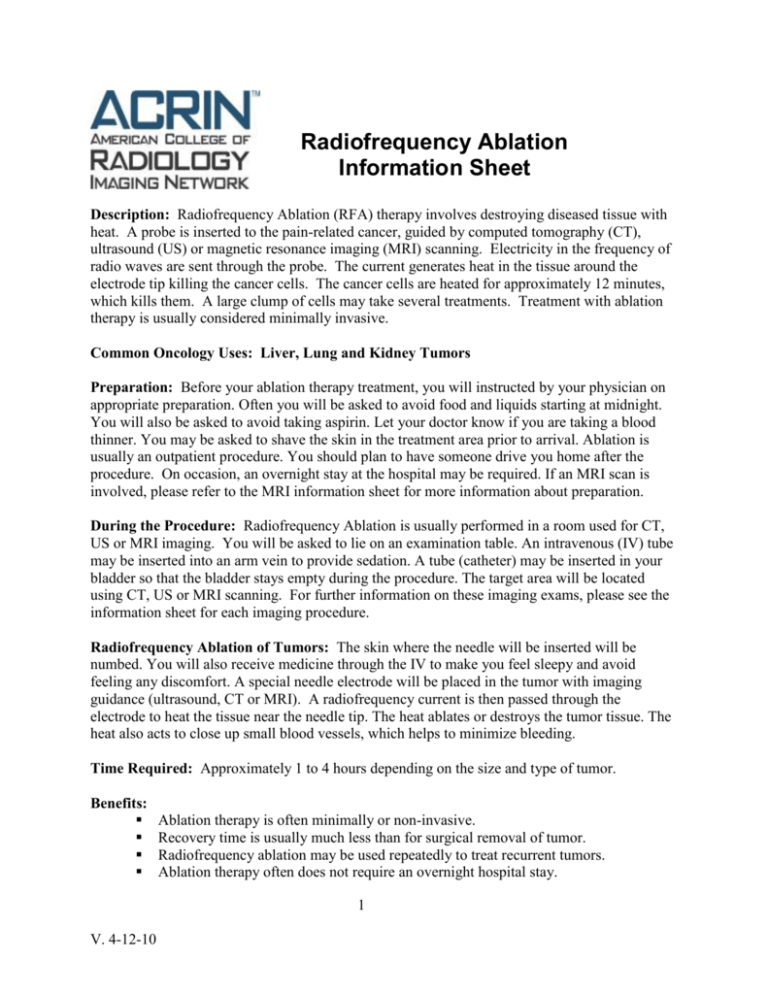
Radiofrequency Ablation Information Sheet Description: Radiofrequency Ablation (RFA) therapy involves destroying diseased tissue with heat. A probe is inserted to the pain-related cancer, guided by computed tomography (CT), ultrasound (US) or magnetic resonance imaging (MRI) scanning. Electricity in the frequency of radio waves are sent through the probe. The current generates heat in the tissue around the electrode tip killing the cancer cells. The cancer cells are heated for approximately 12 minutes, which kills them. A large clump of cells may take several treatments. Treatment with ablation therapy is usually considered minimally invasive. Common Oncology Uses: Liver, Lung and Kidney Tumors Preparation: Before your ablation therapy treatment, you will instructed by your physician on appropriate preparation. Often you will be asked to avoid food and liquids starting at midnight. You will also be asked to avoid taking aspirin. Let your doctor know if you are taking a blood thinner. You may be asked to shave the skin in the treatment area prior to arrival. Ablation is usually an outpatient procedure. You should plan to have someone drive you home after the procedure. On occasion, an overnight stay at the hospital may be required. If an MRI scan is involved, please refer to the MRI information sheet for more information about preparation. During the Procedure: Radiofrequency Ablation is usually performed in a room used for CT, US or MRI imaging. You will be asked to lie on an examination table. An intravenous (IV) tube may be inserted into an arm vein to provide sedation. A tube (catheter) may be inserted in your bladder so that the bladder stays empty during the procedure. The target area will be located using CT, US or MRI scanning. For further information on these imaging exams, please see the information sheet for each imaging procedure. Radiofrequency Ablation of Tumors: The skin where the needle will be inserted will be numbed. You will also receive medicine through the IV to make you feel sleepy and avoid feeling any discomfort. A special needle electrode will be placed in the tumor with imaging guidance (ultrasound, CT or MRI). A radiofrequency current is then passed through the electrode to heat the tissue near the needle tip. The heat ablates or destroys the tumor tissue. The heat also acts to close up small blood vessels, which helps to minimize bleeding. Time Required: Approximately 1 to 4 hours depending on the size and type of tumor. Benefits: Ablation therapy is often minimally or non-invasive. Recovery time is usually much less than for surgical removal of tumor. Radiofrequency ablation may be used repeatedly to treat recurrent tumors. Ablation therapy often does not require an overnight hospital stay. 1 V. 4-12-10 Risks: One in four radiofrequency ablation patients may develop a “post-ablation syndrome” with flu-like symptoms. This may appear 2-5 days after the procedure and lasts usually less than one week. Bleeding rarely occurs after radiofrequency ablation, but it usually stops on its own. If bleeding is severe, an additional procedure or surgery may be required. Radiofrequency ablation may cause inflammation to surrounding tissue. Results: An interventional radiologist, who is a physician with specialized training in ablation therapy will analyze and interpret the results of your ablation therapy and then send a report to your personal physician. Often a follow-up CT or MRI is done within a month to confirm that all tumor tissue has been destroyed. It may take a few months to determine the extent of treatment success. For more information: www.radiologyinfo.org This information, as well as additional imaging descriptions, can be found in the “Patients” section of the ACRIN Web site: www.acrin.org. Ablation needle Tumor Hip Example of an RFA ablation of a pelvic tumor The development of lay imaging descriptions is a project of the American College of Radiology Imaging Network Patient Advocacy Committee. 2 V. 4-12-10

